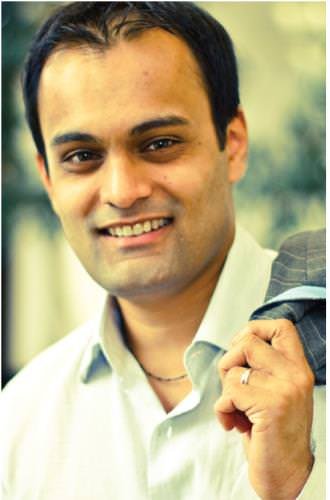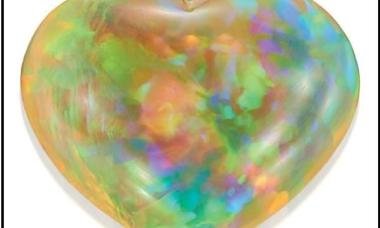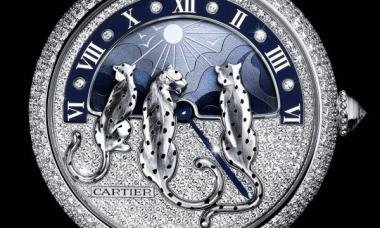Interview conducted by Monica Oproiu Whether buying diamonds or jewellery, there are more options than ever, both offline and online. Shopping for luxury items from your computer, tablet or smartphone is very convenient, but it also has its risks. Most consumers would be concerned about the authenticity of the items they purchase and the price they pay for them. Transparency should be a key component of the online experience of selling and buying jewellery.
Consumers need to be able to make informed decisions based on a transparent appraisal and authentication of the items they want to buy. The Gemological Institute of America (GIA), for example, provides advice for buying diamonds online. Others in the industry, like the non-profit trade association Jewelers Vigilance Committee, also provide educational content for buyers interested in jewellery, precious metals and gemstones. As more and more people chose to buy and sell jewellery online, the market needs to offer them trustworthy alternatives. CIJ Trends and Colours spoke with Tirath Kamdar, CEO and founder of True Facet, an innovative platform for buying and selling second-hand fine jewellery online to find out how to improve transparency and trust in the online jewellery marketplace.
-

- Tirath Kamdar, CEO of True Facet
CIJTC: How did you get the idea for the business?
TK: I spent eight years in the jewellery industry and my family has been in the jewellery industry for about fourteen years. My family manufactures for many brands like David Yurman, Ippolita and many others. We have also supplied loose material for others. One thing I noticed was that if people go to ten different places to buy jewellery they would get ten different prices. The same thing happens when they try to sell. Another thing I noticed is that 40% of designer products sold online were counterfeit. So I wanted to try and help people with these problems. In January 2014 we put together the team for True Facet. The idea was to build a platform where people can sell their jewellery back, get the best price in real time, and have a luxury experience. It was meant as a platform where customers can shop with confidence because they know everything is authentic and at the best price. Our goal now is to become the trusted go-to destination for fine second hand jewellery and watches online shopping.
CIJTC: Why focus exclusively online?
TK: We think we can provide our customers with the best luxury experience trough technology. Also, we can reach a wider audience online. So we decided to start online first and in the future we could build offline stores and connect the two in order to provide an omni-channel experience. This is actually the main trend in the United States nowadays: businesses start online and then they expand offline.
CIJTC: What makes True Facet special?
TK: Firstly, we are the first business to focus exclusively on second hand jewellery and watches. Secondly, our authentication and pricing process truly makes us unique. We built photo recognition technology for the authentication of jewellery. We can use this technology to see if the product is fake or not for about 40% of the items sold. As far as pricing is concerned, we built an engine that provides real time accurate prices by using data from Google, hundreds of other sources like eBay for example, and offline retail stores. We take a product and look at the most competitive prices found on Google at the moment, as well as at the last ten transactions on online market places, and then we look at offline appraisal databases for real time prices. All that goes into a system that shows, based on the condition of the item, the best competitor price for selling and buying. Nobody has built something like that! And the engine is getting smarter: right now we are 75%-80% accurate in the price and expect to become 90-95% accurate in the next months.
CIJTC: What happens when you catch someone trying to sell a fake item?
TK: We have appraised almost 10 000 items and identified 350 fake items so far. When that happens, we e-mail the customer, telling them that the item was deemed inauthentic and then explain the reasons behind that. We ask them if they want the item back, because they would have to pay 20 US dollars to receive it after they consigned it to us. Some people are shocked, because they didn’t know the item was fake, or maybe because they bought it online without authentication. We also advise them that we can provide something similar due to our contacts in the industry. And they love that, especially because we deal with the return of the item for them, so they do not have to worry about it anymore.
CIJTC: How are you improving transparency in the online marketplace?
TK: We have a team of appraisers with 50 years of combined experience. One of them used to work at Tiffany’s and Cartier. Another person actually opens the watches. Overall, we are very transparent about the good and the bad about every single item, we communicate the information to the customer appropriately.
CIJTC: How are you cooperating with others in the industry?
TK: We mostly cooperate with retail stores. We send the Cartier products to actual Cartier stores to be checked and refurbished, for example. Also, a lot of retail stores in the United States have used products, but don’t have the means to authenticate them. So they will sell them on our platform, thus reaching a wider audience. We really want to work with the brands and the stores, not against them. That is why we will never engage on the grey market, for example. Our goal is to help the second hand market through authentication, not selling new products that we are not authorized to sell.
CIJTC: How are you educating the customers?
TK: On our platform we have a section called the „True Facet Guide” with two components: education and style. In the education section we write about how to distinguish a fake from an authentic jewellery piece, for example.
CIJTC: What are, in your opinion, the main trends in selling fine jewellery online?
TK: As far as selling jewellery in general goes, 2 to 5 years ago there were not many options and even fewer transparent ones. So from this perspective the main trend is that customers have more options now. Moreover, they can enjoy a fully transparent process. Trends are going forward through technology. At present, you can sell jewellery without leaving your home.
CIJTC: What advice you would give to someone looking to buy second hand fine jewellery online?
TK: I think this applies to buying online jewellery in general, which is, in my view, a four-step process. First, you need to understand the reputation of the online marketplace: look at customer reviews and any press coverage that they might get. Second, look at the description of the item in detail, especially if it has a certificate, a serial number, or if it has been refurbished. Third, make sure that a return policy is available, which is especially important in case you discover it is a fake. Last but not least, you should try to get an appraisal report with the purchase.










